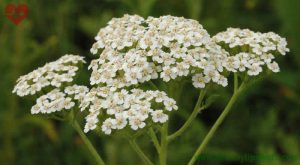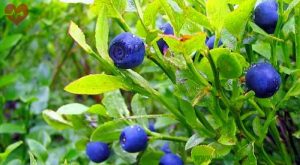Proper diets and vitamins for medicinal herbs
One of the the key factors for physically and psychologically healthy person is a good diet. This means a diet which contains the necessary quantities of the most important nutritional ingredients ( proteins, carbohydrates, fats, vitamins, minerals and other stimulating additive substances).
Insufficient diets are a result of incorrect diets, which destroys the human health, especially those that are still developing.
Beside the carbohydrates, proteins and fats, for normal functioning of the organism other materials are also required, from which vitamins are the most important, mineral materials and stimulating additive substances.
The human organism required proteins from plant and animal origin. That means every day meat, eggs, cheese and milk should be consumed also potatoes, beans, peas and other sources of proteins shouldn’t be forgotten.
Vitamins
We’ve mentioned that almost all vitamins come from plant origins. Vitamin sources are: foods of plant and animal origin. Fruits and vegetables are especially rich in vitamins. Fresh food is richer than canned and cooked foods. Finally, fresh fruit contains more vitamins than dried fruit.
Today 30 vitamins are known, it’s only expected for that number to rise further.
Vitamins based on their solubility are split into those that are: soluble in water and soluble in oils.
The water soluble group contains vitamins such as B – complex and c vitamin.
Vitamins soluble in ols are A, D, E and K.
a) Vitamin A
Vitamin A contains a lot of vegenal products. Presented in international units in 100g of a product:
– Apricot 3,000 IU
– Cabbage 900
– Green pepper 1000
– Red pepper from 3,500 to 35,000
– Tomato pulp
(Processed-salsa) 14000-35000
– Tomato juice 300-600
– Spinach 2500-6000
– Carrot (aight) 2000-10000
From the vegetal products an especially rich source of carotin represent the oils made from different types of palms, of which some can contain up to 300.000 in a 100 g of it.
b) Vitamin B
Amount of vitamin B in certain plant products , in micrograms per 100 grams of the product is as follows:
– Barley 500 micrograms per 100 g
– Corn 180
– Sprouts of corn. . 1380
– Rice 60-270
– Wheat 540-1022 micrograms per 100 g
– White flour 60-90
– Rye 300-500
– Bran 1.080
– Buckwheat 450
– corn bread 240
– Bread of rye 240-500
– White bread wheat. . 45-90
– Semi-white bread 150
– Black bread 225-450
vegetables:
– Peas 450-500 micrograms
– Cauliflower 150-190
– Potato 90-180
– Cabbage boiled 180
– Tomatoes 240
– Beans 150-400
– Mushrooms 110
– Soy 520-1200
– Lens 120-630
– Spinach 50-120
fruit:
– Almond 240 micrograms
– Banana 150
– Apples 30-120
– Chestnuts 270
– Peanut 300-960
– Hazelnuts 400-600
– Nuts 450
– Prunes 125
c) Vitamin C
a) Fruit:
– Pineapple 25-60
– Strawberries 46-234
– Lemon peel …. 100-205
– Lemon juice 30-70
– Half ripe nuts. . 400-3000
– Orange peel …. 80-210
– Black currant. . . 100-400
– Rosehip 70-4800
b) Vegetables:
– Cauliflower 90-170
– Kale 126
– Potato crisp 11-36
– Potatoes old 5-10
– Cabbage. . . , _ 62-105
– Onions 120
– Green pepper. . 125-180
– 150 red pepper
– Parsley (leaf). 150-210
– Radish 105-136 micrograms
– Dried soy 17-75
– Spinach 50-80 ”
– Asparagus 12-71






